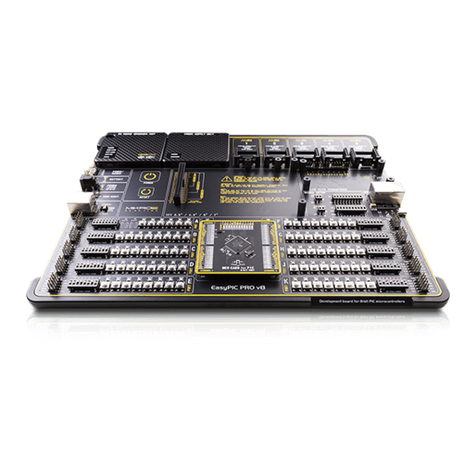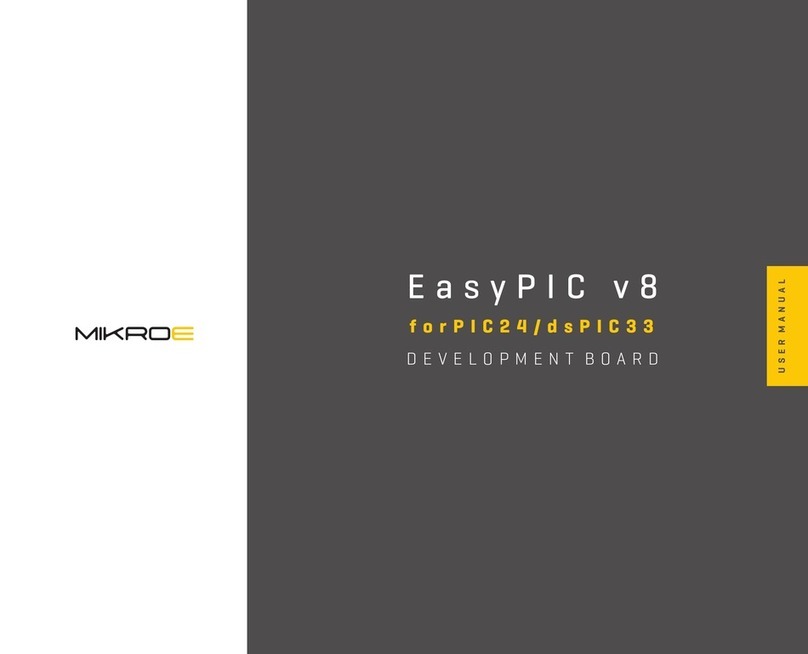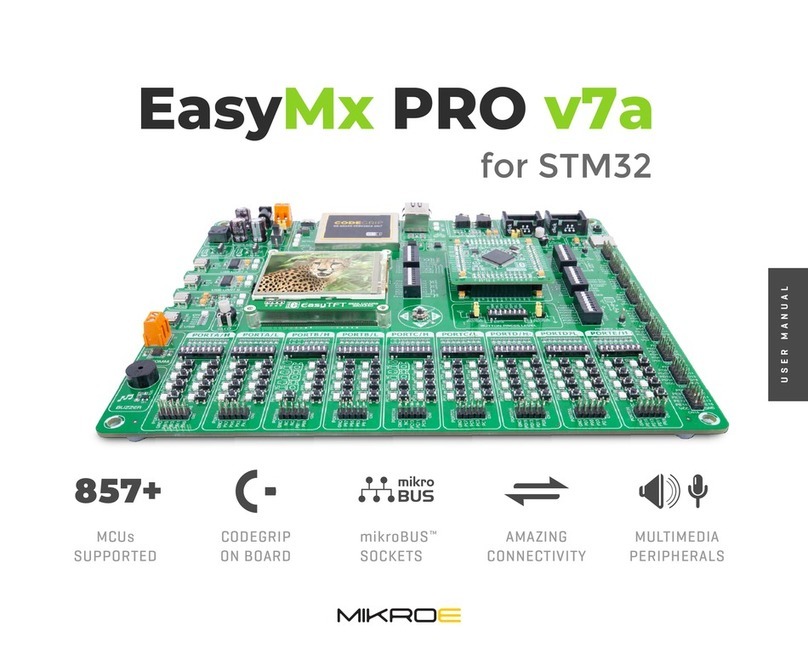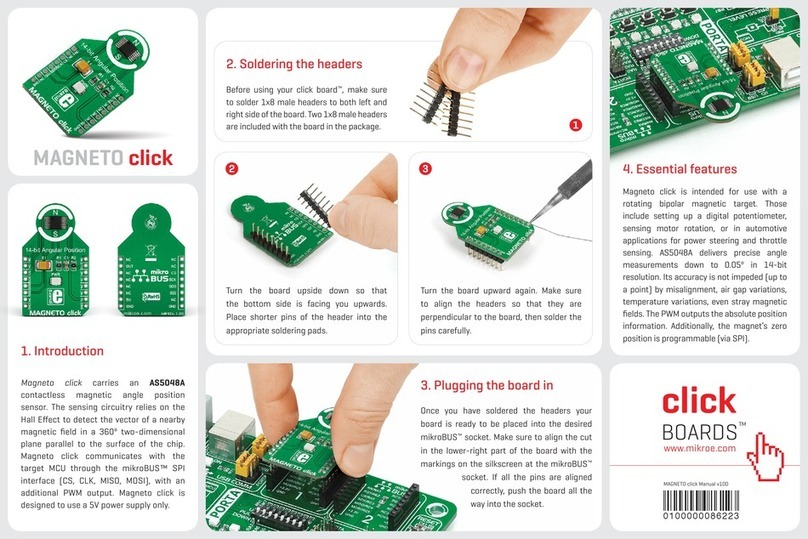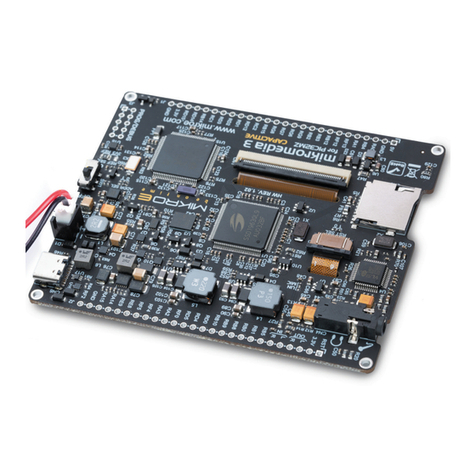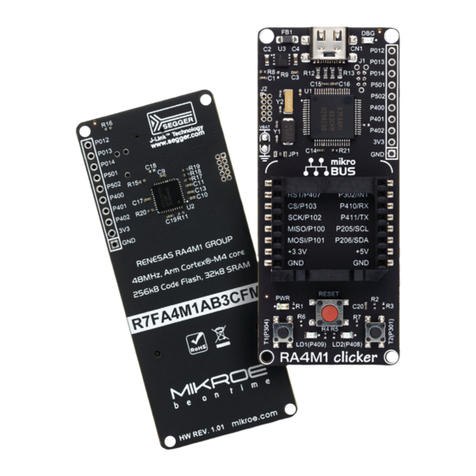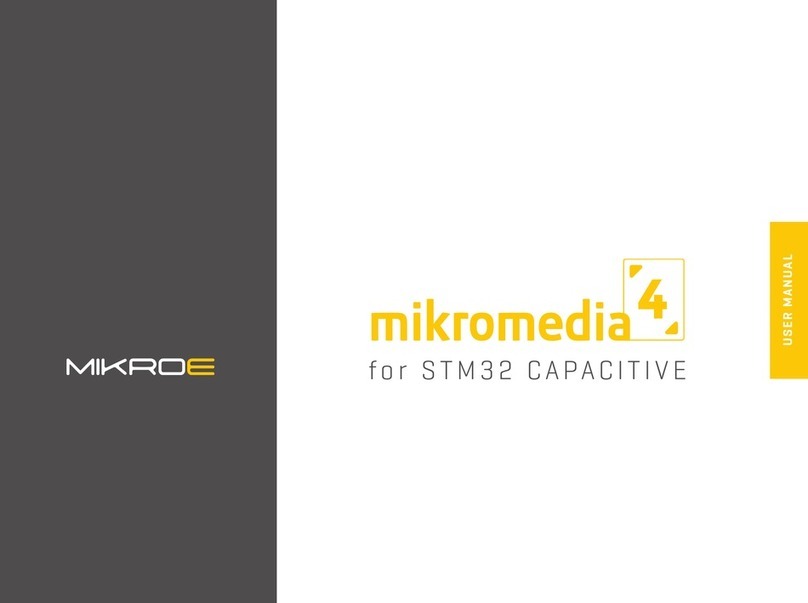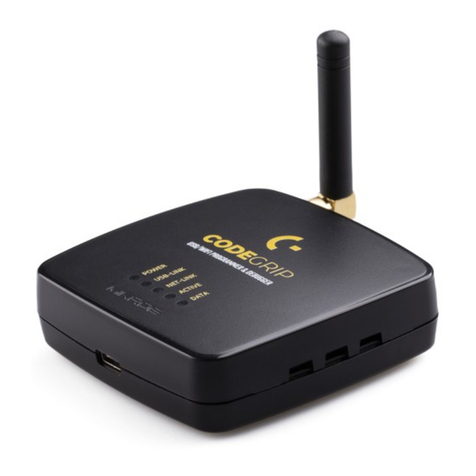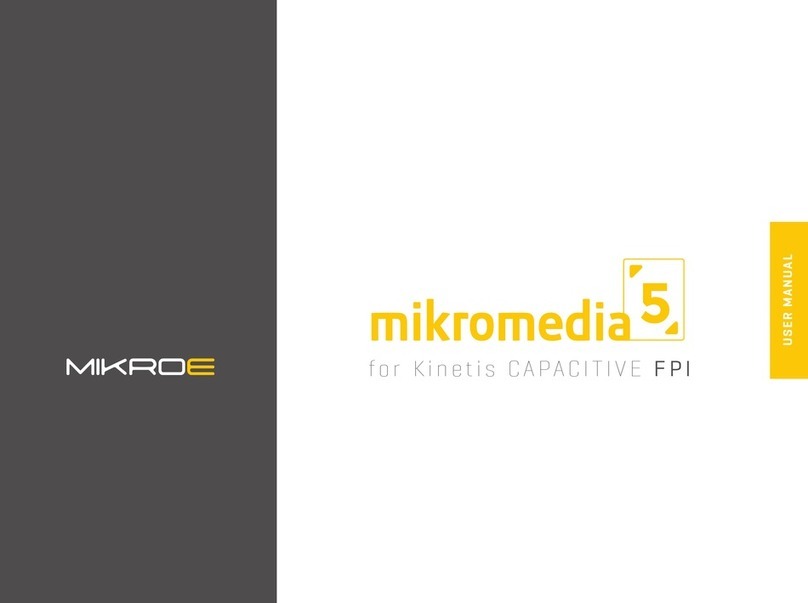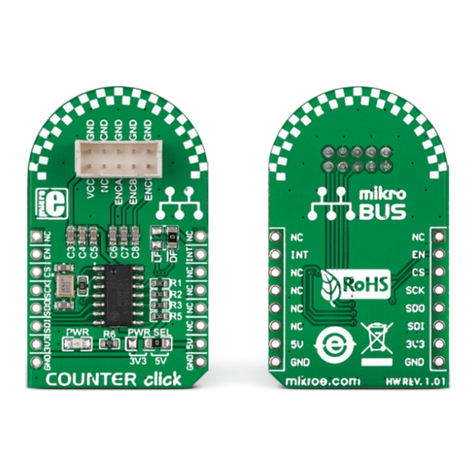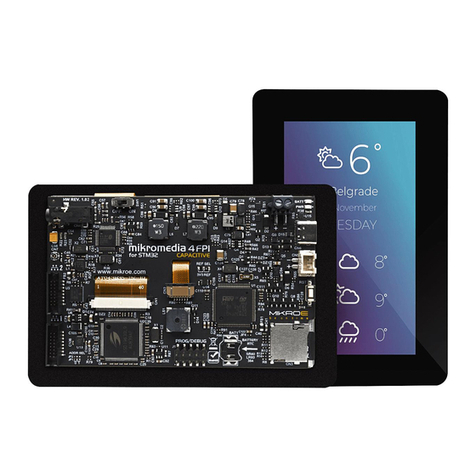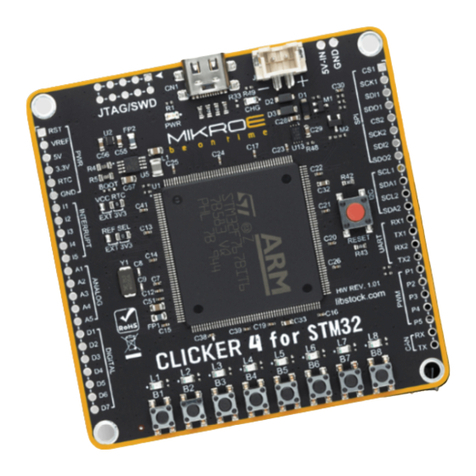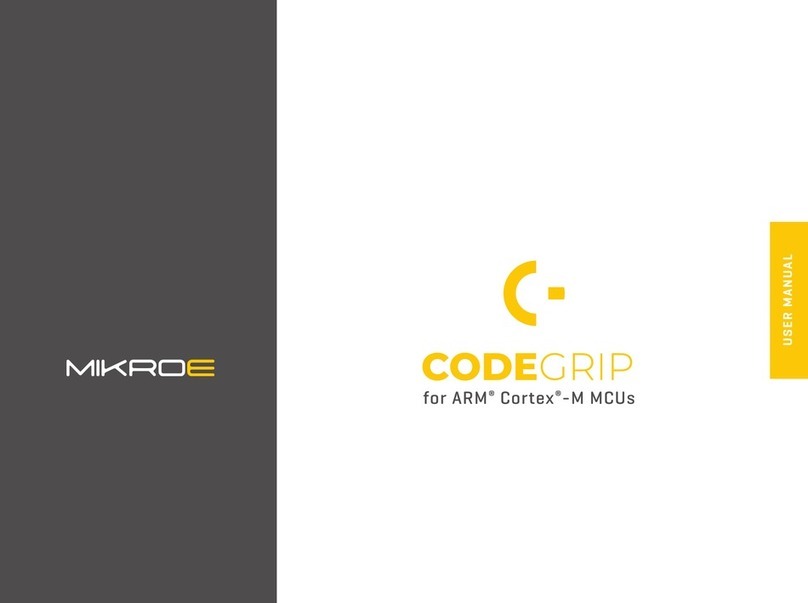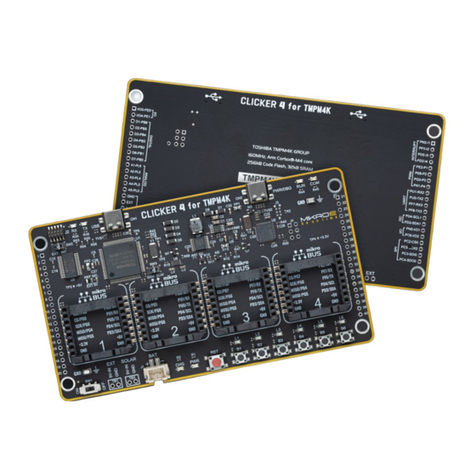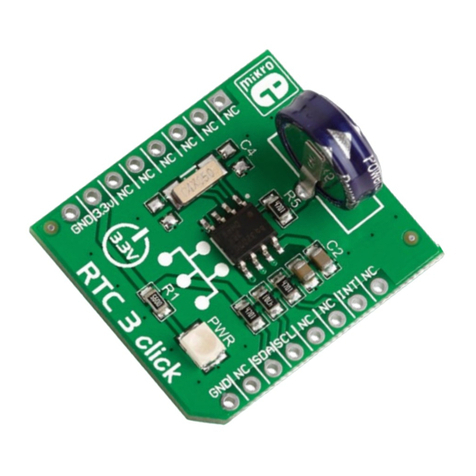
E a s y A V R P R O v 8 M a n u a l
P A G E 9 P O W E R S U P P L Y
When multiple power sources are connected at once, this circuitry is also used to
determine the input priority level: externally connected 12V PSU (2), power over
USB (3), and the Li-Po/Li-Ion battery (4). The transition between available power
sources is seamless, providing uninterrupted operation of the development board.
The next PSU stage uses two MIC28511, synchronous step-down (buck)
regulators, capable of providing up to 3A at their output. The MIC28511 IC utilizes
the HyperSpeed Control®and HyperLight Load®architectures, providing an ultra-
fast transient response and high efficiency for light loads. Each of the two buck
regulators is used to supply power to the corresponding power supply rail (3.3V
and 5V), throughout the entire development board and connected peripherals.
Power 12VDC, external power supply
An external 12V power supply can be connected over the DC barrel connector,
labeled as POWER 12VDC (2). When using an external power supply, it is
possible to obtain an optimal amount of power, since one external power
supply unit can be easily switched for another, while its power and operating
characteristics can be decided per application. The development board
allows maximum current of 3A per power rail, when using an external 12V
power supply.
The development board will be able to maintain its operating voltages within
the specified limits, as long as the voltage of the external power supply stays
within the range stated below, in the table. Having in mind all the additional
peripherals that can be connected to the development board, as well as their
power consumption, the external power supply should be considered as a
primary power source, especially for the most power demanding applications.
Power/debug, USB-C connector
The development board can be powered over the USB-C connector, labeled
as POWER/DEBUG (3). This connector provides power from the USB host,
USB power bank, or USB wall adapter. When powered over the USB connector,
the available power will depend on the source capabilities.
Maximum power ratings, along with the allowed input voltage range in the
case when the USB power supply is used, are given in the table Figure 2.
N O T E
If the host PC is not equipped with the USB-C connector, a Type A to
Type C USB adapter may be used.
Figure 2: USB Power supply table
USB Power Supply
Input Voltage [V] Output Voltage [V]
3.3
5
3.3 & 5
1.8
1.4
0.8 & 0.8
5.94
7
6.64
Max Current [A] Max Power [W]
MIN
4.4 5.5
MAX
When using PC as a power source, the maximum power can be obtained
if the host PC supports the USB 3.2 interface, and is equipped with USB-C
connectors. If the host PC has a USB 2.0 interface, it will be able to provide
the least power, since only up to 500 mA (2.5W at 5V) is available from the
host in that case.
Note that when using long USB cables or USB cables of low quality, the voltage
may drop outside the rated operating voltage range, causing unpredictable
behavior of the development board.
PSU connectors
As explained, the advanced design of the PSU allows several types of power
sources to be used, offering unprecedented flexibility: when powered by a
Li-Po/Li-Ion battery, it offers an ultimate degree of autonomy. For situations
where the power is an issue, it can be powered by an external 12VDC power
supply, connected over the 5.5mm barrel connector. Power is not an issue
even if it is powered over the USB cable. It can be powered over the USB-C
connector, using power supply delivered by the USB HOST (e.g. personal
computer), USB wall adapter, or a battery power bank.
There are three power connectors available, each with its unique purpose:
POWER/DEBUG, USB-C connector (3)
BATTERY, standard 2.5mm pitch XH battery connector (4)
POWER 12VDC, barrel type male 2mm x 6.5mm power connector (2)
